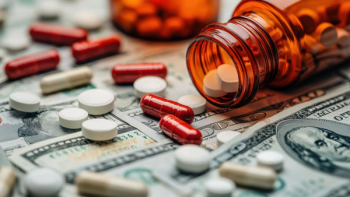
HHS begins a process of evaluating drug importation; industry demurs
FDA working group’s effort is part of a larger move to realign drug pricing policies
Looked at one way, the overtures made by HHS Secretary Alex Azar (pictured) toward importing non-FDA-approved drugs from overseas could be a slight extension of what FDA already does: allow the temporary importation of drugs to address immediate shortages. But regulatory policies have a way of being transformed as legislators and policymakers get involved, and it’s not clear where the potential change could wind up.
In a press statement released on July 19, Secretary Azar stated that he has instructed FDA to set up a working group “to examine how to safely import prescription drugs from other countries in the event of a dramatic price increase for a drug produced by one manufacturer and not protected by patents or exclusivities.” This is targeted fairly specifically at the situation made infamous by Turing Pharma and its CEO, Martin Shkreli, where the price of Daraprim was jacked up by over 5,000% in 2016. (Shkreli was subsequently convicted of securities fraud; even after the outcry over the price hike, the drug still costs that elevated price of about $750 per pill retail).
This news was announced at a time when President Trump and pharma leaders are publicly engaged with each other: in the past week or so, Pfizer, Novartis and Merck have all announced delays in price increases or made promises to hold pricing (Merck included actual price rollbacks). Additionally, Azar is following through on the statements
FDA Commissioner Gottlieb—no slouch at issuing press releases—came out with a statement the same day as Azar's, noting that there can be “significant price increases that close off channels of availability” for drugs, just as a shortage does. For single-source drugs whose patent exclusivity has expired, the agency will “examine whether—under these narrow conditions—the additional market competition from the short-term importation of foreign versions of the drug may complement the FDA’s current efforts, and help meet near-term patient need in the U.S. until new competition is able to enter the domestic market.”
Importation has bounced around for many years in Washington, routinely comes up during Presidential election periods, and states bordering Canada have made a variety of forays into permitting it in defiance of federal policy. In many cases, the same drug sold in the US (and sometimes from the same manufacturing plant) is sold at dramatically lower prices—usually negotiated by governments in single-payer systems—outside the US. It is routine for non-US pharma manufacturers to obtain FDA approval to bring their drugs in; conceivably, under a new policy, manufacturers could sell their products without FDA approval. (From a libertarian-philosophy perspective, this is in line with
The Healthcare Distribution Alliance came out with a statement against importation almost immediately: “We have significant concerns with allowing the importation of prescription drugs intended for sale in foreign markets into this country. Importation would threaten and destabilize the significant industry-government collaboration already underway to ensure the safety and security of the domestic pharmaceutical supply chain through implementation of the Drug Supply Chain Security Act (DSCSA),” said HDA president, John Gray. Preventing counterfeits was the ostensible reason for passing DSCSA in 2013—and there are numerous instances of counterfeits showing up in the US market—but the law also serves to provide better visibility to the overall supply chain, a benefit to manufacturers and patients alike. The industry is
PhRMA, the pharma lobby, had not issued a statement as of the afternoon of July 20, but is long on record with objections to importation, mostly focused on how it could let counterfeit products enter the pharma supply chain. Importation schemes “fail to acknowledge that the resources required to ensure the safety and efficacy of any drugs being imported from or passing through other countries into the United States would outweigh any potential savings … Not to mention, the exponentially higher risk of counterfeit, adulterated and substandard products entering the United States and harming patients would be playing Russian roulette with patients’ lives.” A couple days before the HHS announcement, PhRMA had filed its
Newsletter
Stay ahead in the life sciences industry with Pharmaceutical Commerce, the latest news, trends, and strategies in drug distribution, commercialization, and market access.





